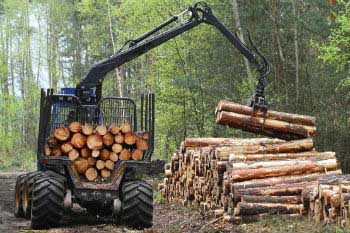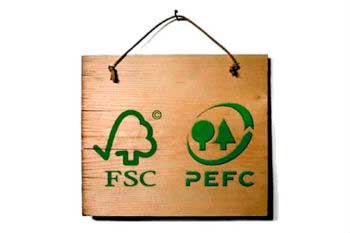Why is certified wood important?
Deforestation is a serious problem which ravages forests and jungles. Know why certified wood is important to reduce it.Deforestation is a serious problem which ravages forests and jungles all over the world. Fires, agriculture, livestock farming and wood exploitation are some of the major causes of a more and more serious deforestation whose impact increases the effects of climate change and destroys biodiversity.

Certified word: FSC and PEFC
It all began with tropical wood and environmentalist groups who suggested that its exploitation should be controlled. The first definition of Sustainable Forest Management emerged in the UN Ministerial Conference in Rio de Janeiro in 1992, though concerns about deforestation and the need to control wood extraction and handling existed from years before.
There are currently two major types of certification worldwide:
1. FSC:
It was in 1990 when deforestation started to be considered a global problem, and several companies that consumed or produced wood decided to meet in California to seek a way of control. It was thus agreed to create a system which reliably identified forest management when it comes to producing wood by-products. It had to prove that it was somehow a sustainable and responsible method. This way, Forest Stewardship Council came into being, like a non-profit organisation.

2. PEFC:
It is a professional and international non-profit organisation which promotes sustainable forest management and the certification of forest-origin raw materials. At present it is made up of 38 national organisations around the globe, and it came into existence in 1998 as a voluntary initiative of the forest private sector, designed to meet the criteria and indicators of the Ministerial Conferences on the various climate regions. This is the Program for Endorsement for Forest Certification.
What are these certifications about?
These two types of certification are designed to ensure an environmentally-friendly, socially beneficial and economically feasible forest management. This is achieved by assessing forests and companies from the wood sector that voluntarily undergo this certifying assessment, which implies an added value as it guarantees the legal and sustainable origin of raw materials. The process is carried out by auditing its various stages, from the forest to the end product.
- Forest Management certification. An audit takes places in the forest and then its manager or owner is awarded the certification once all the requirements are met.
- Chain of Custody certification. The audit takes place in the company that transforms wood or other forest-origin products, which come from forests already certified as FSC or PEFC, until the different consumer products are obtained (paper, furniture, corks, etc.).
Those forest products that cannot prove their sustainable origin have at least the chance to guarantee their legal origin; in this case we are referring to:
- Wood from Controlled Sources. By checking its compliance with the regulations on the exploitation of the forest it is possible to ensure that the EU Timber Regulation (EUTR) is being fulfilled; both PEFC and FSC mark this wood as coming from Controlled Sources.
The structures of both certificates are very similar, and both PEFC and FSC are acknowledged systems in all public policies on responsible purchasing, such as those adopted by the EU, the UK, Japan, Germany and so forth.
The chief difference is that, based on some global Principles and Criteria, through certification entities authorised by its accreditation body ASI, FSC certifies forests from anywhere in the world, whereas PEFC demands the formation of a National Forum that reaches an agreement on the System and Regulations on Sustainable Forest Management adjusted to the country, with the further need to pass a Mutual Recognition Procedure in order to be considered as a PEFC System.
Why certifying?

1. Sustainable forest management has environmental advantages; it reduces the risk of fires, prevents deforestation, preserves biodiversity, helps mitigate climate change, and preserves water and soil…
2. It provides economic benefits as it improves productivity by streamlining the exploitation and use of forests.
3. Not only do forests produce wood but also cork, firewood, resins, pastures…this benefits people as it generates jobs and social welfare.
4. Caring for the environment contributes to the development of rural areas and encourages outdoor leisure activities.

If we want to preserve global forests, so that these continue absorbing the CO2 we emit into the atmosphere, perpetuate the water cycle and prevent deforestation, droughts and a global warming increase, it is our responsibility as consumers to always demand their certification.
By consuming certified-wood products, we make sure that they come from a responsible and sustainable production. Is it not reason enough to look at their certification? Paper, doors, tables…we are surrounded by these products! Set out!
And…had you ever looked at your wood products certification?
* Did you like this article? Subscribe and you will receive our next email publications. You can do it here.

